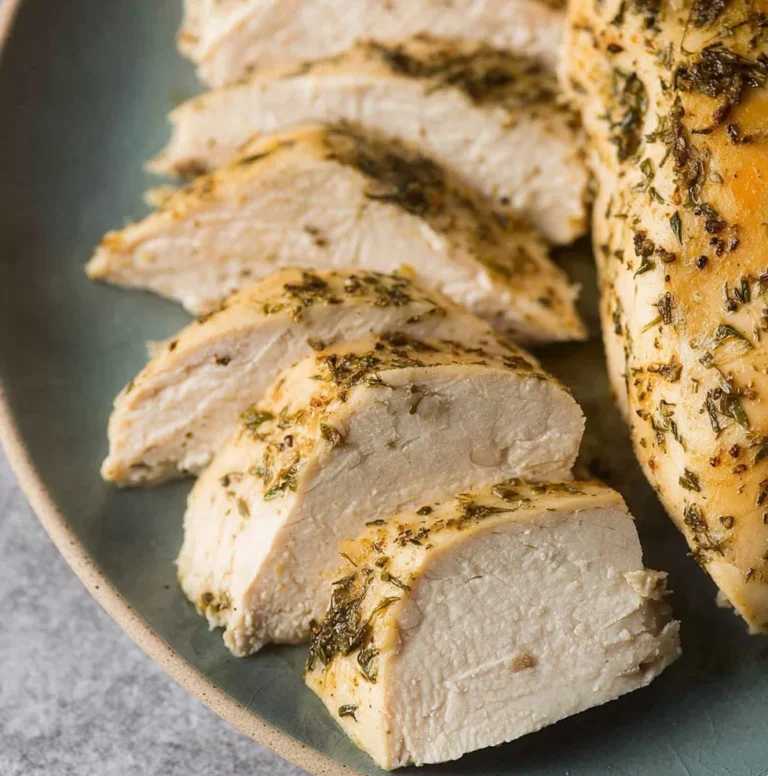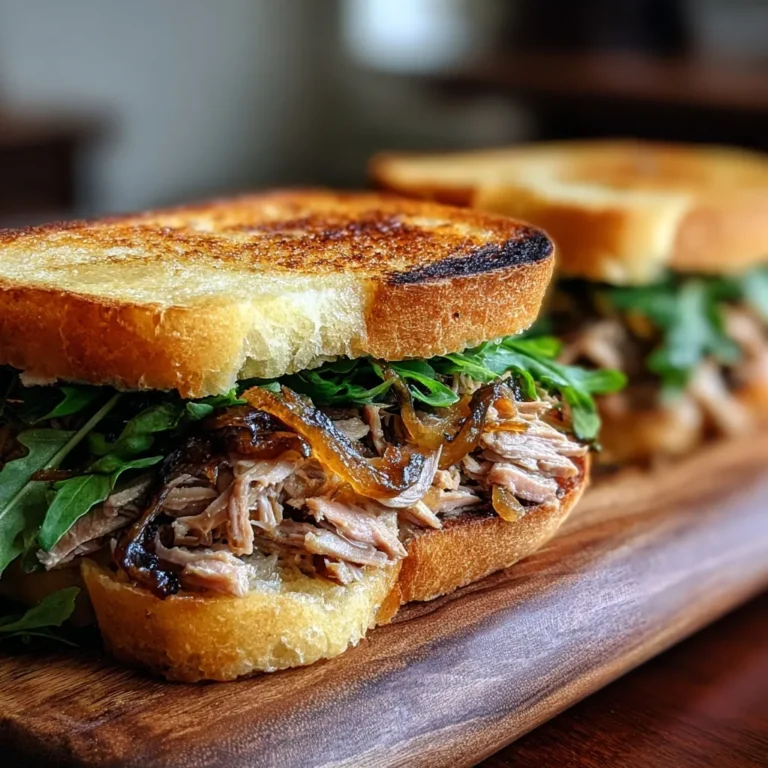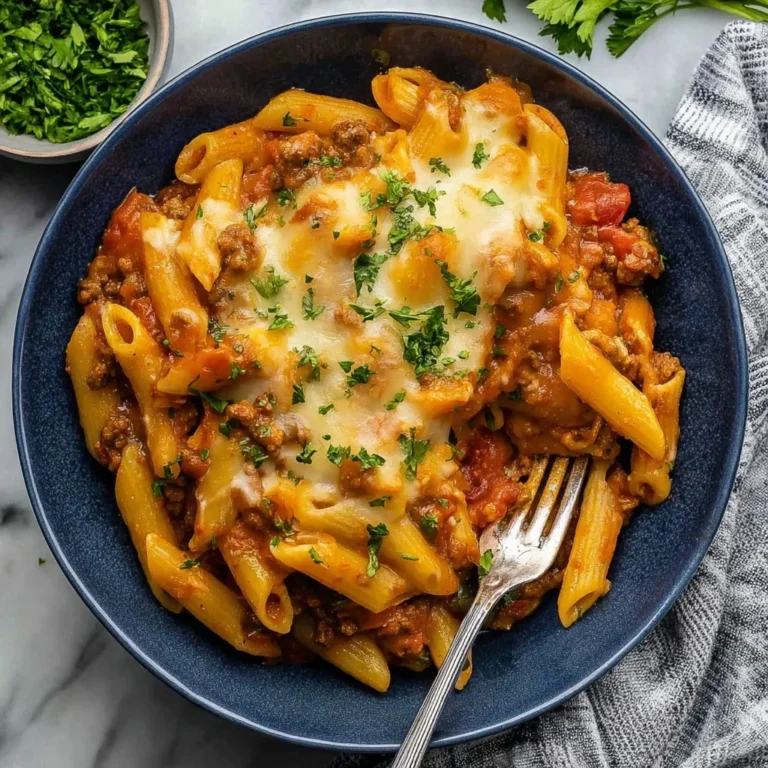Tteokbokki Recipe: How I Make This Spicy Korean Comfort Food at Home
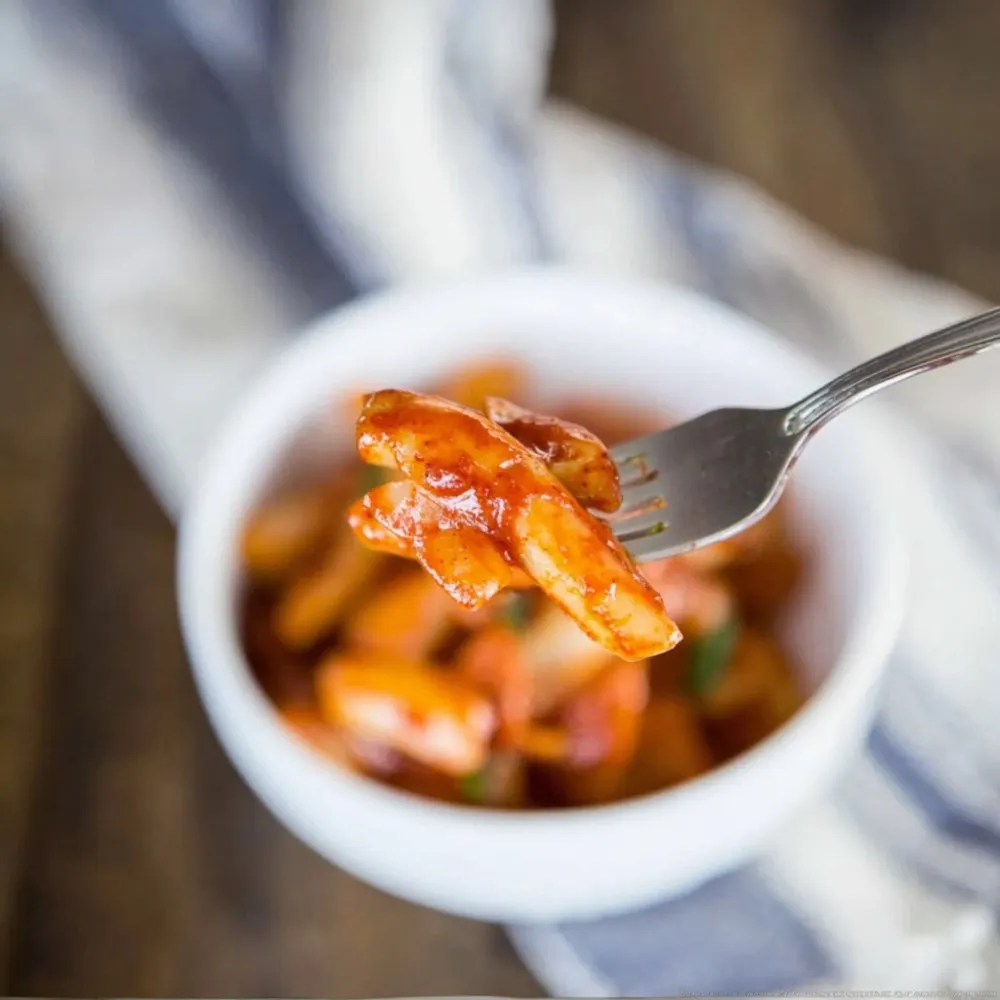
The very first time I had tteokbokki, I was standing at a tiny street cart in Seoul, wrapped in a scarf and holding a steaming cup of fish cake broth in one hand. The woman behind the cart handed me a shallow bowl filled with glossy red rice cakes, and from the first bite — chewy, sweet, fiery — I was hooked.
Since then, this comforting tteokbokki recipe has become one of my absolute favorite comfort foods. It’s quick, it’s bold, and it hits every craving at once: spicy, slightly sweet, and ultra-satisfying. Over the years, I’ve tested dozens of versions until I found my go-to method — simple enough for weeknights, but rich enough to taste like it came straight from a Korean pojangmacha.
In this post, I’ll show you exactly how I make my easy tteokbokki recipe at home, with step-by-step instructions, ingredient swaps, and a few personal tips I’ve learned along the way. Whether you’re new to Korean cooking or already obsessed with it (like me), I’m so glad you’re here — this is the tteokbokki recipe I always come back to, and I can’t wait to share it with you.
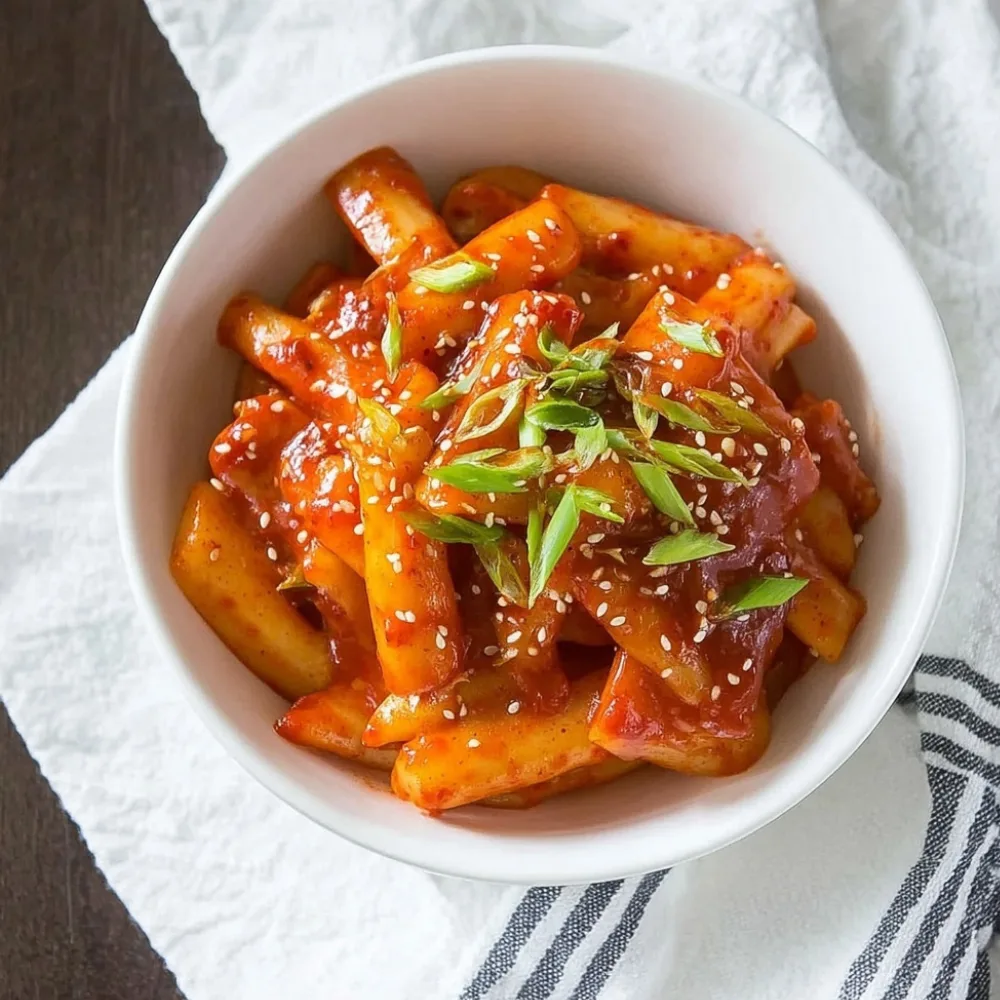
What is Tteokbokki Recipe? (And Why It’s So Addictive)
If you’ve never tried tteokbokki before, let me introduce you to Korea’s ultimate street food star. It’s a dish made with tteok — chewy, cylindrical rice cakes — simmered in a bold, spicy-sweet sauce made from gochujang (Korean chili paste), soy sauce, and a bit of sugar. The result? Something that’s comforting, crave-worthy, and totally unforgettable.
And if you’re ready to make it at home, this easy tteokbokki recipe will walk you through every step — no special skills or fancy tools needed. Whether you’re cooking for yourself or sharing it with friends, this is the tteokbokki recipe you’ll want to keep bookmarked.
A Little Cultural Background
Tteokbokki (떡볶이, pronounced duhk-boh-kee) has deep roots in Korean cuisine. Interestingly, the earliest versions weren’t spicy at all — they were made with soy sauce and beef! Over time, especially with the rise of Korea’s vibrant street food culture, the bright red, spicy-sweet version we know today became the most popular. It’s this modern twist that inspired me to develop my own easy tteokbokki recipe at home.
You’ll spot it everywhere in Korea — from school canteens to bustling late-night food stalls — often eaten from a paper cup, with a wooden skewer in one hand and a satisfied smile on your face.
If you’ve ever wanted to recreate that nostalgic, fiery bite at home, this tteokbokki recipe will take you there.
Why I Make This All the Time
Honestly? I make tteokbokki recipe whenever I need a quick fix for something warm, spicy, and a little indulgent. It’s:
- Ready in under 20 minutes
- Cooked in just one pan
- Easy to customize (more on that soon)
- Total comfort food, no matter the season
It’s one of those dishes that feels special even though it’s incredibly simple — and once you’ve made it, you’ll keep coming back to this tteokbokki recipe like an old friend.
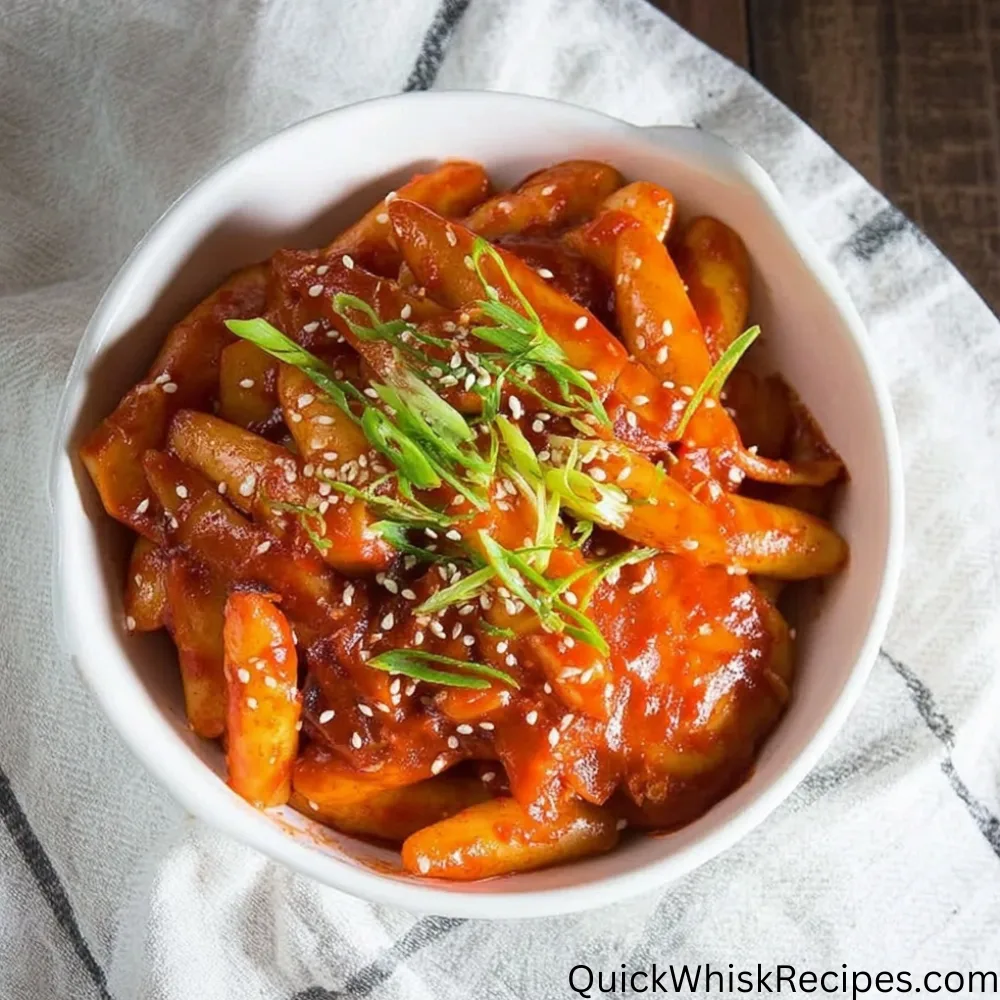
Ingredients You’ll Need
I like to think of tteokbokki as one of those magical dishes where a few simple ingredients come together to create something seriously bold and unforgettable. You don’t need anything fancy — just a few Korean pantry staples that you can usually find at an Asian grocery store or order online.
This tteokbokki recipe keeps things simple, approachable, and beginner-friendly — but the flavors are anything but basic. Whether you’re making it for the first time or adding it to your weekly rotation, this is the kind of tteokbokki recipe that delivers every single time.
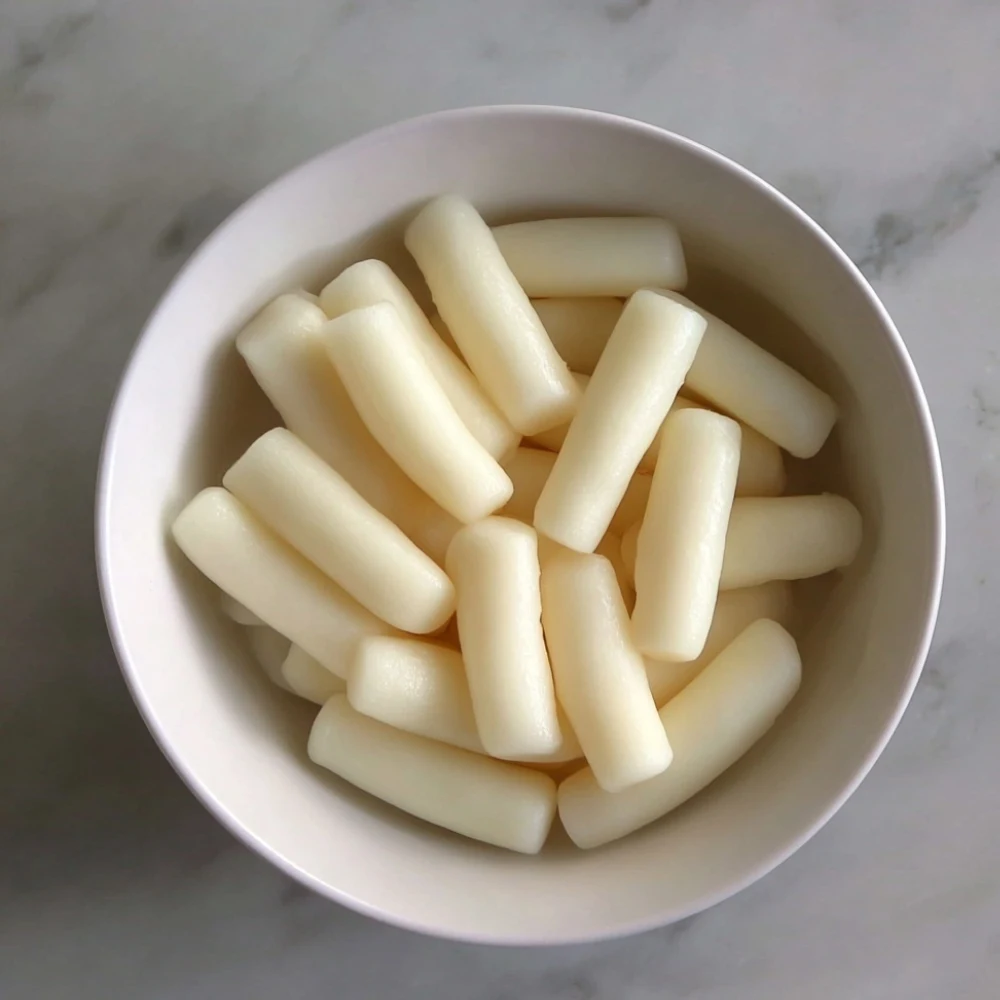
Pantry Essentials
Here’s what I always reach for:
- Tteok (Korean rice cakes): I usually go for the cylindrical ones, either fresh or frozen. If frozen, just soak them in warm water before cooking.
- Gochujang: This is the heart of the sauce — a thick, fermented red chili paste that adds both spice and a touch of sweetness.
- Gochugaru (optional): Korean red chili flakes. I only add this when I want an extra kick.
- Soy sauce: For that salty, umami base.
- Sugar: Just a little to balance the heat.
- Garlic: Freshly minced makes all the difference.
- Water or broth: I use anchovy broth when I want it extra savory, but plain water works just fine too.
Optional Add-Ins
Depending on my mood (or what’s in the fridge), I’ll often toss in one or more of these:
- Fish cakes: Classic! Slice them thin so they soak up the sauce.
- Boiled eggs: They absorb the flavor and make the dish more filling.
- Green onions: I throw these in at the end for freshness and a pop of color.
- Mozzarella cheese: For cheesy tteokbokki — because why not?
Want More Flavor Pairings?
- Try it with this cool and creamy Dairy-Free Ranch — a perfect way to balance the heat.
- Or go bold with a dollop of my Cashew Cheese on top. You’ll love the contrast!
- Feeling festive? Pair it with my refreshing Strawberry Margarita Recipe — the fruity twist makes it all pop.
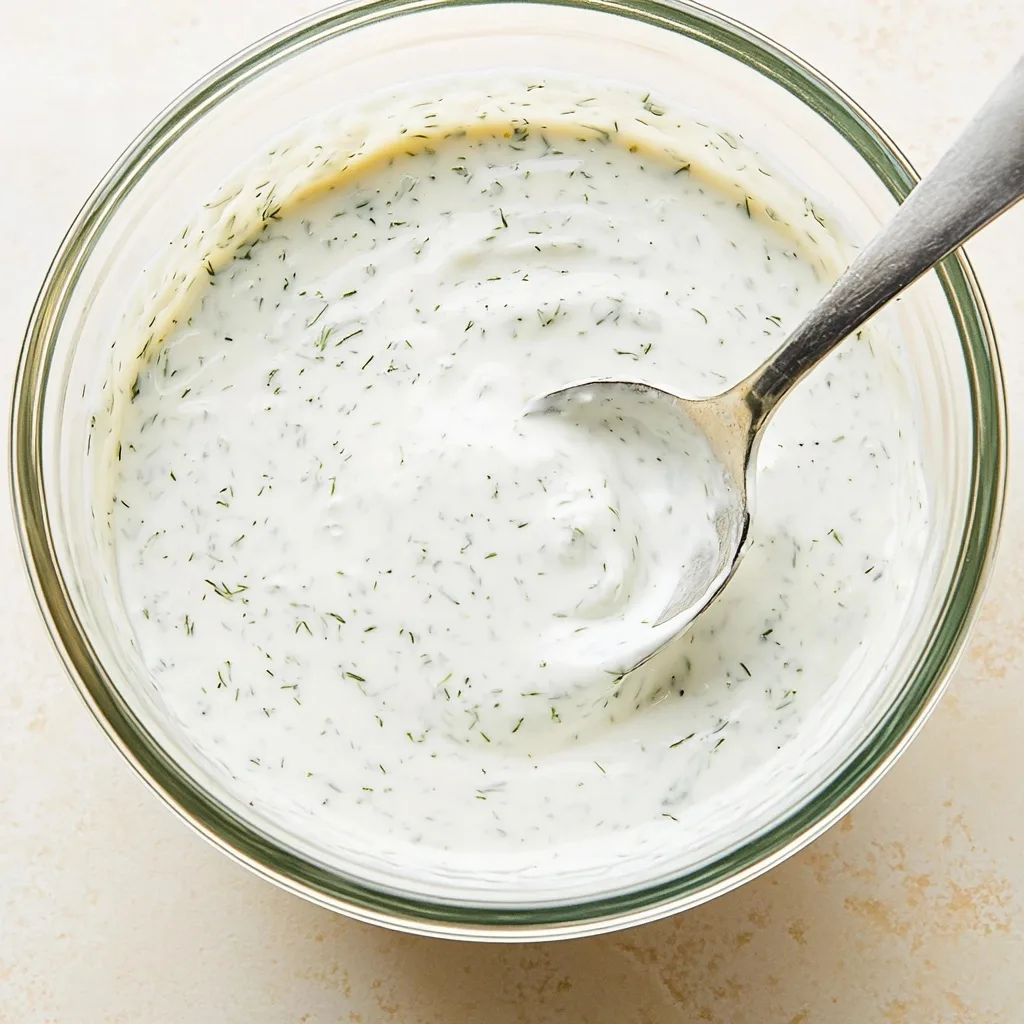
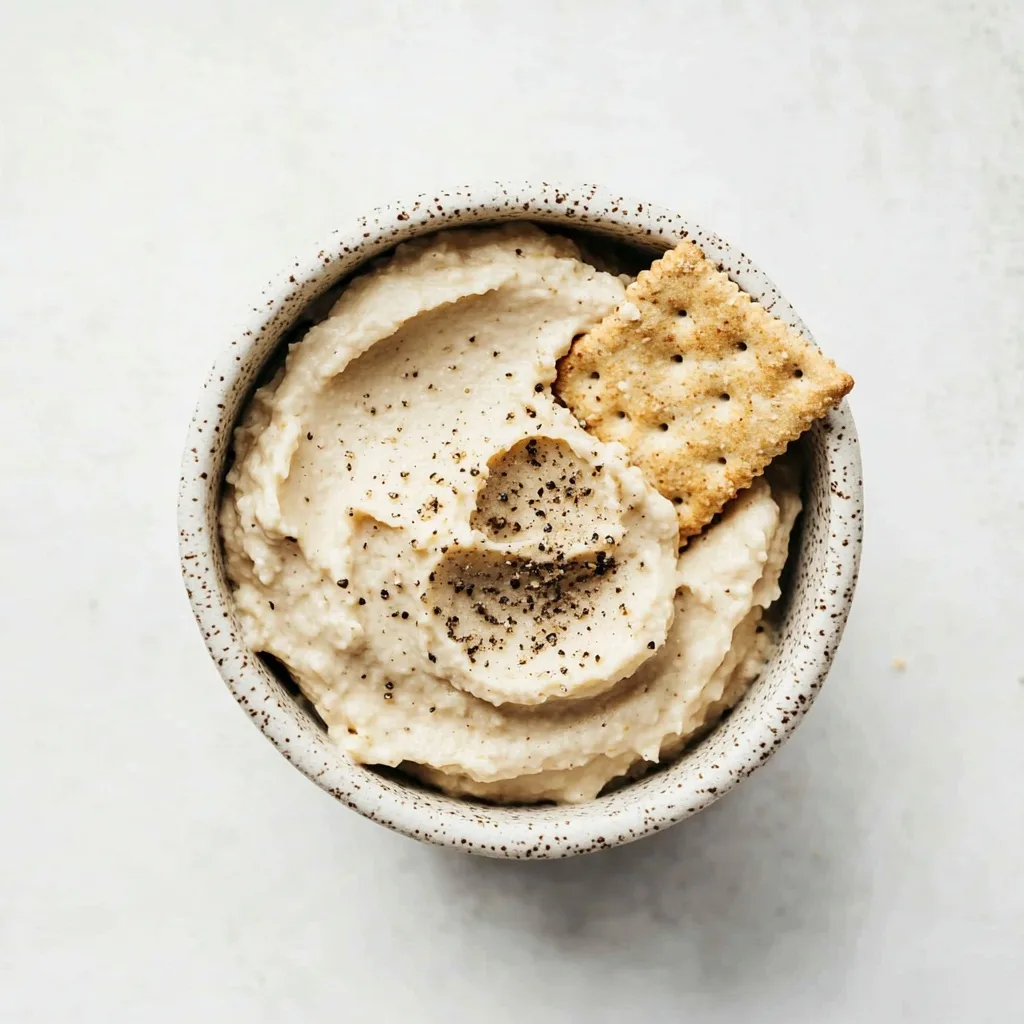
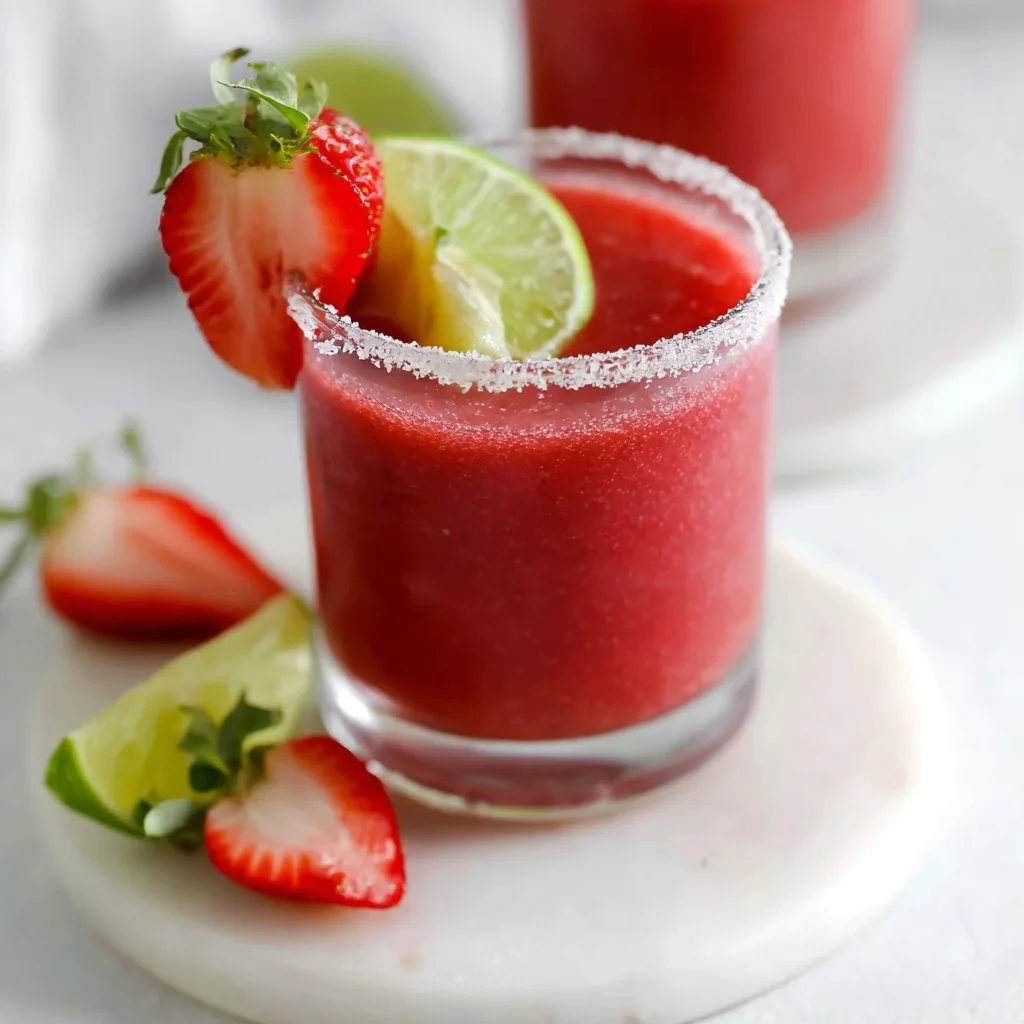
My Ingredient Tips
Over time, I’ve learned a few tricks:
- If your gochujang is really spicy, reduce the amount slightly and add more sugar.
- For a vegan version, skip the fish cakes and anchovy broth — I love using mushroom broth or even just water with a splash of soy.
- Don’t stress if you can’t find gochugaru. The dish is still amazing without it!
How to Make This Tteokbokki Recipe (Step-by-Step)
This is my go-to method for making tteokbokki at home — it’s quick, fuss-free, and always hits the spot. Whether it’s your first time or your fiftieth, these step-by-step instructions will guide you to that perfect balance of chewy, spicy, and just a little sweet.
If you’re ready to try an easy, flavor-packed tteokbokki recipe, you’re in the right place. This is the kind of tteokbokki recipe that becomes a favorite from the very first bite.
Step 1: Soften the Rice Cakes
If you’re using frozen rice cakes, soak them in a bowl of warm water for about 10 to 15 minutes. They’ll loosen up and become easier to cook evenly.
If you’ve got fresh ones, just give them a quick rinse and set them aside.
Personal tip: I like to prep the rest of the ingredients while the rice cakes soak — multitasking magic!
Step 2: Make the Sauce
In a wide, nonstick pan, combine:
- 1 ½ tablespoons gochujang
- 1 teaspoon gochugaru (if you like it spicy)
- 1 tablespoon soy sauce
- 1 tablespoon sugar
- 2 minced garlic cloves
- 1 ½ cups of water or broth
Whisk everything together over medium heat until it’s smooth and slightly bubbling. This sauce smells incredible — spicy, garlicky, and deep with flavor.
Step 3: Add the Rice Cakes
Drain the rice cakes and toss them into the sauce. Stir gently to coat them well, then let everything simmer together for 8 to 10 minutes. Stir occasionally so they don’t stick to the bottom.
As it simmers, the sauce will thicken and cling beautifully to the rice cakes. That’s when you know it’s almost ready!

Step 4: Garnish & Serve
Once the rice cakes are soft and the sauce is thick and glossy, turn off the heat. Stir in:
- A drizzle of sesame oil
- A sprinkle of sesame seeds
- Sliced green onions
Optional (but highly recommended): top with shredded mozzarella and let it melt — cheesy tteokbokki is next-level good.
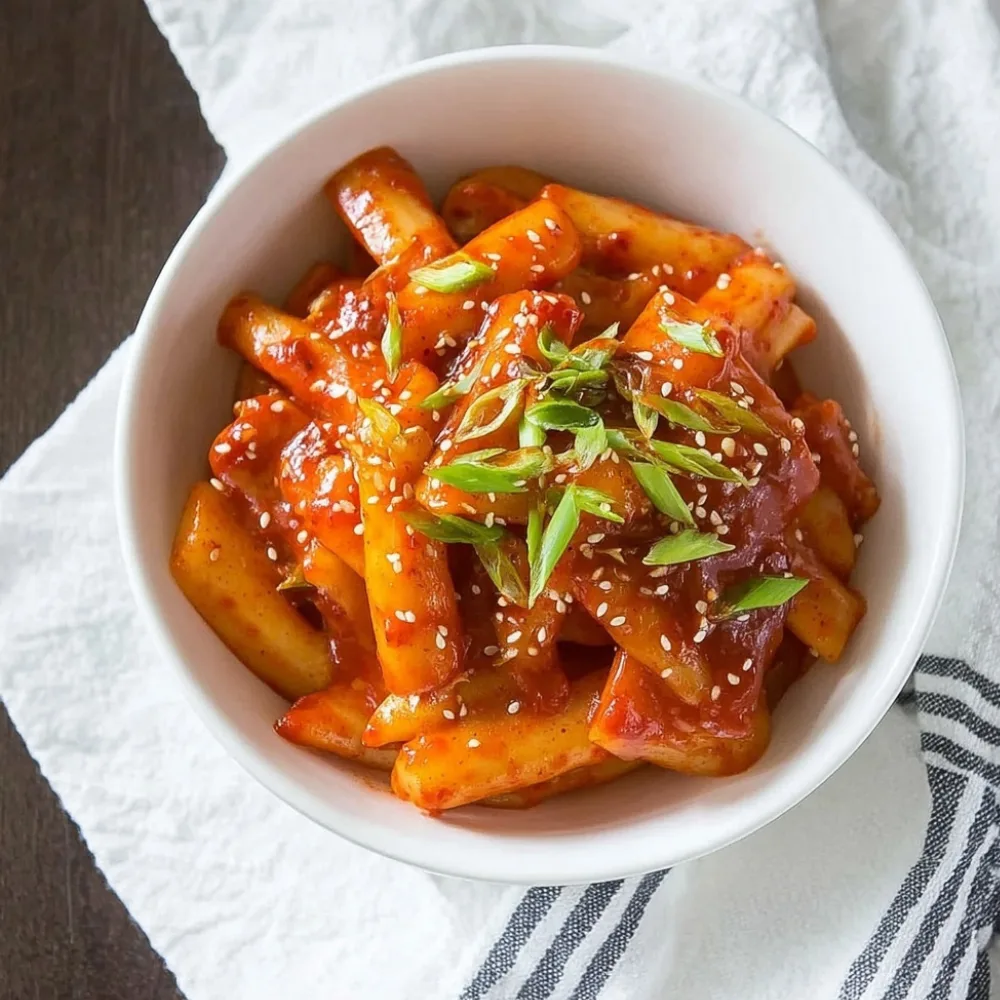
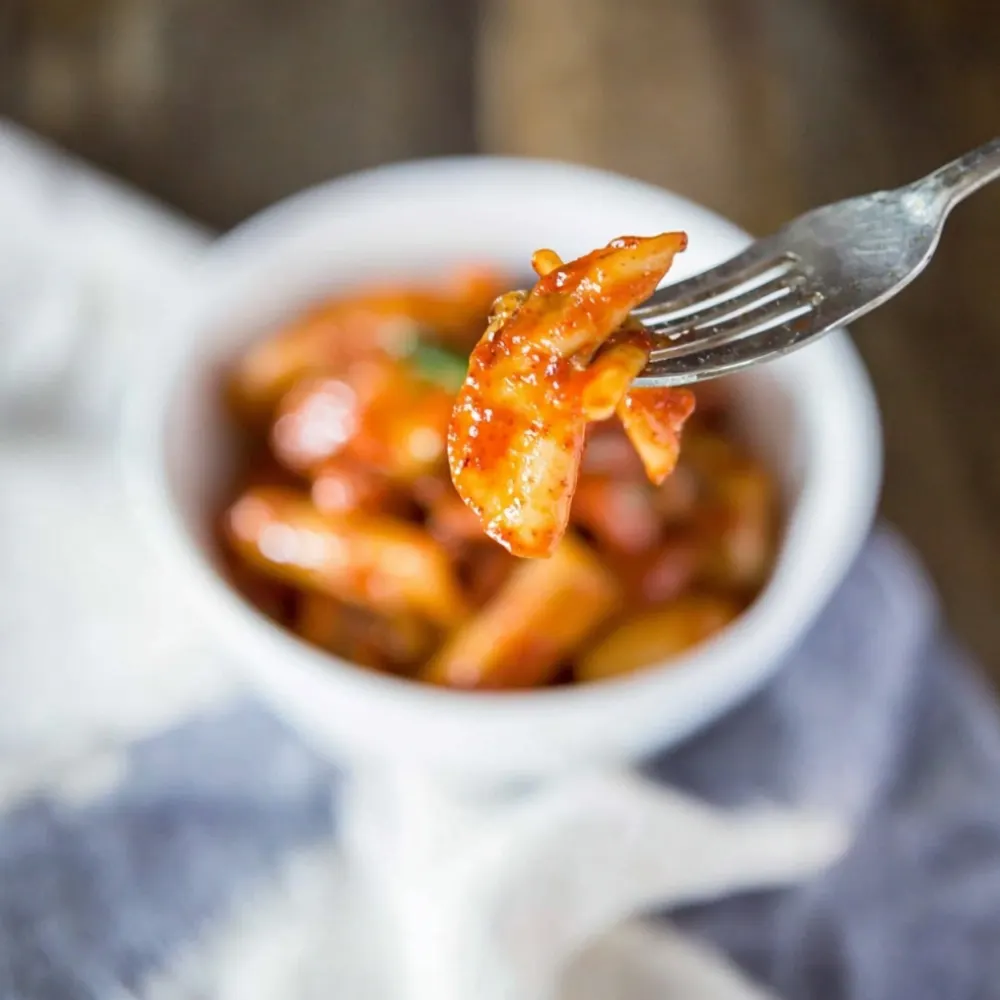
My Favorite Variations
One of the best things about tteokbokki recipe is how flexible it is. Once you’ve got the basic recipe down, you can totally make it your own. Some days I’m in the mood for spicy and bold, other days I want it creamy or cheesy — and tteokbokki never lets me down.
Here are a few of my favorite ways to switch things up:
Cheese Tteokbokki
After the rice cakes are done simmering, I sprinkle a generous handful of shredded mozzarella cheese over the top, cover the pan, and let it melt into gooey perfection. The combination of spicy and creamy is so comforting.
Seafood Tteokbokki
Sometimes I toss in a few shrimp or slices of squid during the last 5 minutes of simmering. The seafood soaks up the sauce and adds a little something special. Just make sure they’re cleaned and bite-sized!
Vegan Tteokbokki Recipe
If I’m making this for vegan friends (or just want something lighter), I skip the fish cakes and use mushroom broth or water with a dash of soy sauce. I’ll often throw in tofu cubes or sautéed mushrooms
Rose Tteokbokki (Creamy Version)
Feeling fancy? Stir in a few tablespoons of heavy cream (or unsweetened oat cream for a dairy-free version) during the final minute of cooking. It turns the sauce a soft orange-pink and mellows out the heat without losing flavor.
There are endless ways to personalize your bowl — and I love that every version still feels like a hug in food form.
Tips for the Perfect Tteokbokki Recipe Every Time
Over the years, I’ve made this dish more times than I can count — and I’ve had my fair share of sticky pans, overly thick sauces, and too-spicy missteps. So here are a few little lessons I’ve picked up along the way that really make a difference:
Don’t Rush the Simmer
Let the sauce and rice cakes gently simmer until everything thickens naturally. If you crank up the heat too much, the sauce can reduce too quickly and the rice cakes won’t cook through properly. Slow and steady wins here.
Too Thick? Add Water
If your sauce looks a little too thick before the rice cakes are fully tender, just stir in a splash of warm water or broth. It’ll loosen things up without diluting the flavor too much.
Adjust the Spice
Every brand of gochujang is different! I always taste the sauce before adding rice cakes and tweak it — sometimes a bit more sugar, sometimes a little less gochugaru, depending on who I’m feeding (and how brave they’re feeling that day!).
Prep Everything First
Tteokbokki recipe comes together quickly once you start cooking, so I recommend prepping all your ingredients — especially soaking the rice cakes — before turning on the heat. It’ll make the process smooth and stress-free.
Insert Image Here: Overhead photo of finished dish with annotations for key tips
Make Ahead & Storage Tips
I’ll be honest: tteokbokki is at its absolute best right after it’s made — that’s when the rice cakes are soft, bouncy, and coated in that thick, spicy sauce. But if you do end up with leftovers (or want to prep ahead), here’s how I keep things delicious.
How to Store Leftovers
Let the tteokbokki cool completely, then transfer it to an airtight container. I usually store it in the fridge for up to 2–3 days. The sauce will thicken even more in the fridge, and the rice cakes will firm up — but don’t worry, we’ll fix that in a second.
How to Reheat
To reheat, I spoon everything into a pan and add a few tablespoons of water or broth. Warm it gently over low to medium heat, stirring occasionally until the rice cakes soften again and the sauce loosens up.
Tip: You can also microwave it in short bursts (add a splash of water first), but I find stovetop reheating keeps the texture better.
Can You Freeze It?
I don’t recommend freezing tteokbokki — the rice cakes can get grainy or fall apart once thawed. If you really need to freeze it, freeze the sauce separately and just make fresh rice cakes later.
Nutrition & Health Insights
Tteokbokki may be indulgent and spicy, but it can absolutely fit into a balanced lifestyle — especially when you’re mindful of ingredients and portion sizes. Here’s what you should know:
Rice Cakes: Simple Carbs & Gluten-Free
Korean rice cakes (tteok) are made primarily from rice flour. They’re naturally gluten-free and low in fat, making them an accessible option for many diets.
- A plain rice cake (about 10g) contains ~35–40 calories and mostly carbohydrates.
- However, they’re low in fiber and protein, so pairing them with veggies, tofu, or eggs makes the dish more nutritionally complete.
Health.com – Are Rice Cakes Healthy?
Nutrition at a Glance
A typical homemade serving of tteokbokki (1½ cups) contains:
- Calories: ~320
- Carbs: ~55g
- Protein: ~5g
- Fat: ~6g
To make it more balanced:
- Add protein like eggs, fish cakes, or tofu
- Mix in fiber-rich veggies like mushrooms, spinach, or bell peppers
- Use brown rice cakes if available for added whole-grain benefits
PopSugar – Dietitians Say Rice Cakes Deserve a Rebrand
Printable Recipe
Tteokbokki Recipe (Korean Spicy Rice Cakes)

Ingredients
- 1 pound (450g) Korean rice cakes (tteok), fresh or frozen
- 1½ tablespoons gochujang (Korean red chili paste)
- 1 teaspoon gochugaru (Korean chili flakes, optional)
- 1 tablespoon soy sauce
- 1 tablespoon sugar
- 2 garlic cloves, minced
- 1½ cups water or anchovy broth
- 1 tablespoon sesame oil
- 2 green onions, sliced
- 1 teaspoon sesame seeds
Optional Add-ins:
- Fish cakes, sliced
- 2 boiled eggs
- Shredded mozzarella cheese
Instructions
- Soften the rice cakes: If using frozen tteok, soak in warm water for 10–15 minutes. Drain before use.
- Make the sauce: In a wide pan, combine gochujang, gochugaru, soy sauce, sugar, garlic, and water or broth. Stir over medium heat until smooth and slightly bubbling.
- Simmer with rice cakes: Add rice cakes to the sauce. Simmer 8–10 minutes, stirring gently, until rice cakes are soft and sauce thickens.
- Garnish and serve: Drizzle with sesame oil, sprinkle green onions and sesame seeds. Add mozzarella and cover to melt, if using. Serve hot and enjoy!
Notes
- Rice cakes tip: If yours are very hard, soak them a bit longer until fully softened.
- Broth options: Anchovy broth gives a traditional flavor, but mushroom or vegetable broth works great for vegan versions.
- Spice level: Adjust gochugaru or gochujang to your liking — you’re in control of the heat.
- Cheesy twist: Mozzarella cheese melts beautifully over tteokbokki and adds a creamy contrast to the heat.
- Leftovers: Add a splash of water when reheating to bring the sauce back to life. Avoid freezing for best texture.
Nutrition Information:
Yield: 3 Serving Size: 1 bowlAmount Per Serving: Calories: 320Total Fat: 6gCarbohydrates: 55gProtein: 5g
Based on 3 servings, without cheese or eggs. All values are estimated and may vary depending on ingredients and portion sizes.
Frequently Asked Questions
What are the ingredients of tteokbokki?
The classic tteokbokki recipe includes Korean rice cakes (tteok), gochujang (Korean red chili paste), soy sauce, sugar, garlic, and water or anchovy broth. You can also add extras like fish cakes, boiled eggs, green onions, or mozzarella cheese for more flavor and texture. I’ve even made vegan versions with mushrooms and veggie broth — just as delicious!
What is included in tteokbokki?
Besides the base ingredients, tteokbokki can include a variety of add-ins depending on your taste or regional styles. Popular choices include sliced fish cakes (called eomuk), hard-boiled eggs, scallions, cheese, seafood like shrimp or squid, and even ramen noodles (known as rabokki when combined). It’s super customizable!
What is the English name for tteokbokki?
In English, tteokbokki is usually called spicy Korean rice cakes. The word comes from tteok (rice cake) and bokki (stir-fried or braised). So the literal translation is “stir-fried rice cakes.” But trust me — that simple name doesn’t even begin to describe how flavorful and addictive it really is.



